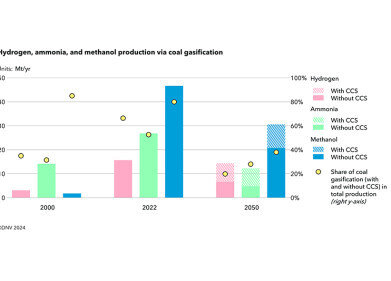Green Energy
Introducing the Game-Changing Ripasso Dish – Probably the Best Solar Energy System in the World
May 27 2015
200-year-old Scottish innovation has come together with Swedish military ingenuity in a South African test site to produce perhaps the most efficient solar energy system we have seen to date.
The engine is based upon a design from 1816 by Scottish engineer and reverend Robert Stirling as an alternative to the steam engine (which incidentally was also developed by a Scotsman, James Watt). An advanced model of the Stirling engine was bought up in 1988 for use by the Swedish military and is now being used by Swedish company Ripasso to pioneer a new, highly-efficient form of solar power.
Double the Power
The state of the art technology involved in the Ripasso engine means that unlike traditional forms of solar power generation, there is no water involved. Instead, the engine works via a closed-cycled regenerative heat engine. This means that it is powered by alternately heating and cooling an enclosed gas, which drives the pistons to create the electricity. For more information on how traditional systems differ to this method, check out the article How Do Solar Farms Work?
Because of its forward-thinking technology, there is no need to convert the power produced by the Ripasso device into grid-ready electricity. Indeed, this is where much of the power garnered by photovoltaic cells are lost. Traditional methods are able to harness around 23% of the energy which strikes them and turn it into electricity, but after conversion, only around 15% of this is able to be used by the grid.
Meanwhile, the Ripasso model dispenses with the necessity of conversion and instead captures around 34% of the rays which hit it, all of which are directly usable by the grid. Its massive dish is constantly changing position to capture as much sunlight as is physically possible, which is then centred on a tiny hot point which drives the engine.
From Destruction to Salvation
CEO of the company Gunnar Larsson formerly headed up Kokums, the military corporation which utilised the Stirling technology in its subs. After realising the potential of the engine’s zero emissions and efficient production process, Larsson promptly resigned and set about founding Ripasso to apply it to solar energy.
“When I founded the company in 2008 my youngest son came to me and said, ‘Wow, daddy, I am so proud of you, now I can tell everyone what you are doing, you are going to save the world instead of destroying it,’” explained Larsson.
Furthermore, Larsson is also doing his best to help the local community. All of the systems involved in the prototype generator have been built using local labour and all of the scientists involved in the project are locally-sourced, too.
The biggest stumbling block in developing the Ripasso engine has been obtaining financial support. Banks have been wary of investing in such an innovative (and at the same time, antiquated) technology. However, after demonstrating the potential efficiency of the device, it appears Larsson now has the backing he needs. Hopefully, if all goes to plan, the first commercially available Ripasso engine shouldn’t be too long in the making.
Events
May 05 2024 Seville, Spain
May 13 2024 Munich, Germany
May 23 2024 Beijing, China
May 23 2024 Beijing, China
Jun 10 2024 Algiers, Algeria














